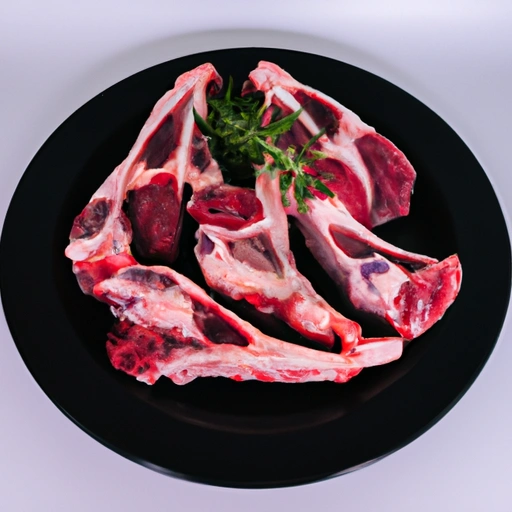Lamb Shoulder
Description

Lamb shoulder is a succulent and tender cut of meat taken from the upper part of the foreleg and includes part of the blade bone. This cut is known for its rich, robust flavor and marbled fat which, when cooked, renders down to create a moist and delectable dish. Lamb shoulder is often sold bone-in but can be boned and rolled for convenience. The average weight of a lamb shoulder can vary, but it typically ranges from 2 to 4 pounds (0.9 to 1.8 kg) when bone-in or 1 to 3 pounds (0.45 to 1.36 kg) when boned.
Common uses
Lamb shoulder is widely used for slow-cooked dishes such as stews, curries, and braises. It is also a popular choice for roasting whole, and pulled lamb shoulder has become a trendy ingredient in sandwiches and salads.
Nutritional value
Calories
A 3-ounce (85 grams) serving of cooked, lean lamb shoulder provides approximately 250 calories.
Protein
The same serving size offers about 21 grams of protein, making it a good source for muscle repair and maintenance.
Fat
Lamb shoulder contains around 20 grams of fat per serving, with a mix of saturated and unsaturated fats.
Carbohydrates
This meat cut typically contains no carbohydrates unless prepared with sauces or marinades that include them.
Vitamins
Lamb is a good source of B vitamins, particularly B12, which is essential for nerve function and the production of red blood cells.
Minerals
It is also rich in essential minerals like zinc, selenium, and iron, which are crucial for immune function and oxygen transport in the body.
Health benefits
Lamb shoulder's protein content supports muscle growth and repair, while its iron content is important for preventing anemia. The presence of B vitamins aids in energy metabolism and overall health.
Potential risks
Overconsumption of lamb shoulder, especially with the fat, can lead to an increased intake of saturated fats, which may contribute to heart disease. It is important to balance lamb consumption with leaner meats and plant-based proteins.
Common recipes
Popular recipes using lamb shoulder include Moroccan lamb tagine, slow-cooked lamb shoulder with rosemary and garlic, and barbecued pulled lamb.
Cooking methods
This cut is best cooked using slow, moist heat methods like braising or roasting to break down the collagen and tenderize the meat. However, it can also be grilled or smoked for a more intense flavor.
Pairing with other ingredients
Lamb pairs well with a variety of flavors, including mint, rosemary, thyme, garlic, and robust spices such as cumin and coriander. It also complements sides like roasted vegetables, couscous, and mashed potatoes.
Summary
Lamb shoulder is a versatile and flavorful cut of meat that lends itself to a range of cooking methods and recipes. Its rich taste and tender texture make it a favorite for slow-cooked meals and roasted dishes. While it is nutritious, providing essential proteins, vitamins, and minerals, moderation is key to maintaining a balanced diet.